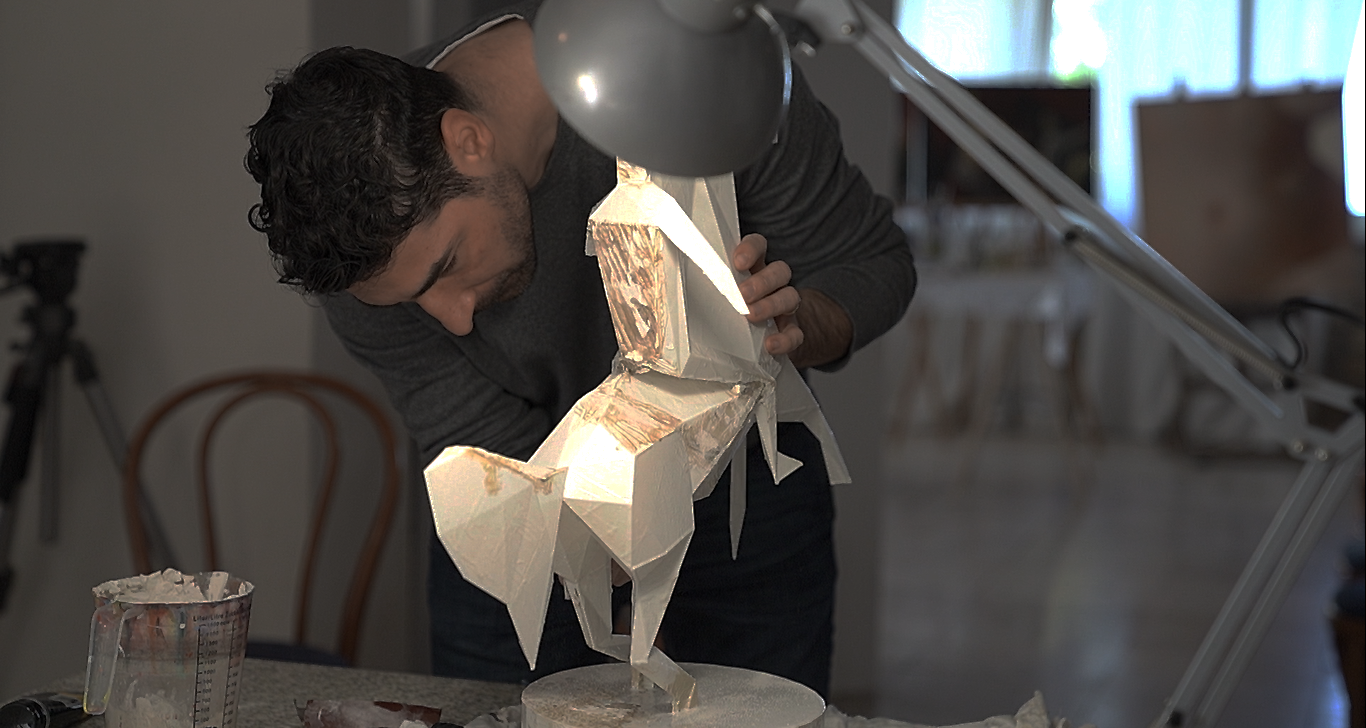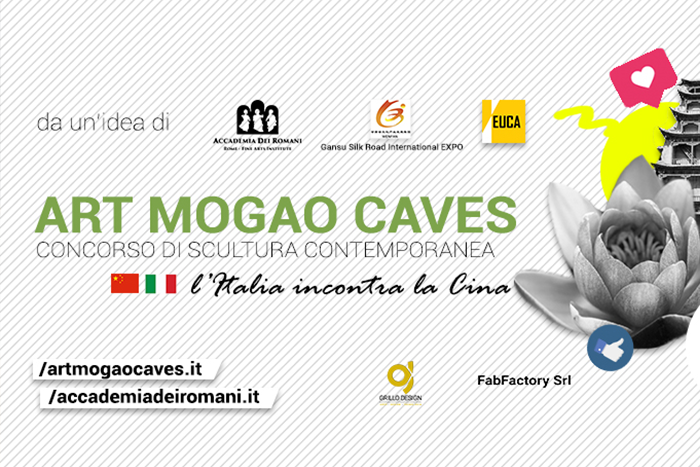When I visited Dunhuang I was enchanted by the particularity of the place surrounded by the golden dunes of the desert, by the Crescent Moon oasis, but above all by a sort of subtle inspiration in the rarefied air, as if the plateau was cloaked in an extraordinary light and from a mysterious silence. Then I saw the Mogao caves and I understood: this type of perception had already been experienced and painted in past centuries by many Buddhist monks. In the hundreds of caves, stories of travellers, scattered peoples, feelings and moods of daily life, age-old customs and traditions are represented and it seemed to me that I had already dreamed of that curious and fascinating world. So I asked myself: how can I contribute to enhancing these sacred places of memory that have brought together different cultures and people of the East and the West? Luckily, the Silk International Road honored the Accademia Dei Romani – Rome Fine Arts Institute to design prototype sculptures, inspired by cave paintings, in order to create monumental works on the Silk Road. The idea of promoting the ARTMOGAOCAVES Competition was born, attended by thousands of artists, of whom a few hundred presented various proposals. During the publication of the competition we received certificates of encouragement, admiration and affection from cities such as Venice, Milan, Florence, Perugia, Naples and of course Rome, since the initiative testifies to the historical moment of the great Chinese development, also in Lanzhou and in the Province of Gansu. The evaluation carried out by the Italian commission selected 84 proposals, which were then more specifically evaluated by the Chinese commission. The result was a group of 25 proposals, particularly relevant to rock paintings, on which we undertook to create as many prototypes in different materials and techniques. The need to reproduce the works in large formats required the use of 3D design, which was followed by the modeling of the prototypes created mostly with 3D printing. However, the direct contribution of the artists was notable both in creation and post-production. In fact, some prototypes have been made several times in order to allow future reproducibility in large formats. The quality of the result demonstrates the enthusiasm experienced by everyone, therefore I thank the evaluation commissions, the competition coordination, the technical operators, all the participating artists and of course the governance of Dunhuang for the trust and foresight placed in us. This type of event served to demonstrate that Art, like the Silk Road, is the way to communicate between peoples and cultures, overcoming any barrier.
Gerardo Lo Russo Director of the Accademia Dei Romani






